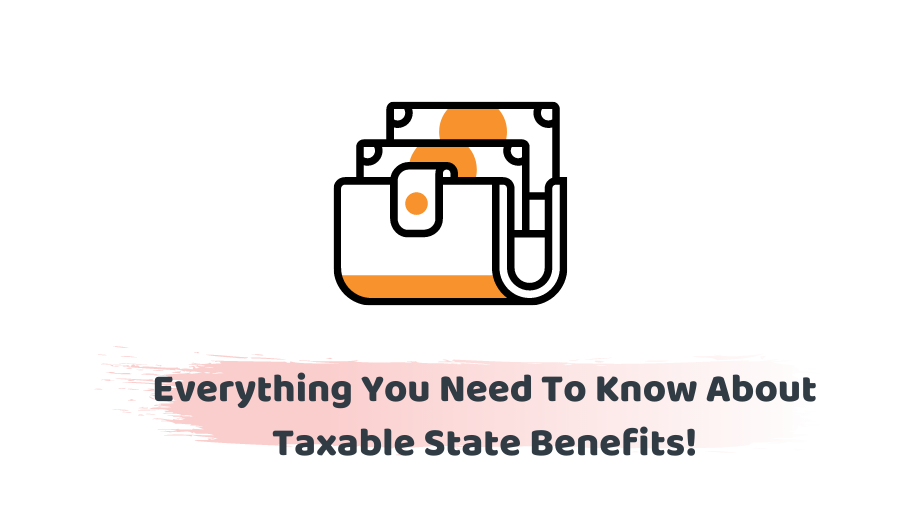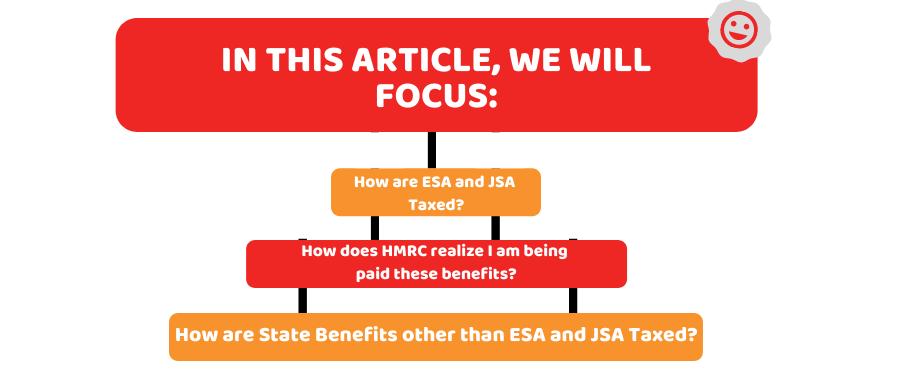It comes as an astonishment to many individuals that some taxable state benefits, for example, the state pension, are actually there in the taxable list.
You should be cautious since certain benefits, similar to Employment and Support Allowance (ESA) and Jobseeker’s Allowance (JSA) can be taxable in case they are paid dependent on National Insurance commitments you have made, or can be non-taxable in case they are rather implies tried (in light of your monetary circumstance). Additionally, be cautious that receipt of certain benefits can influence professes to tax breaks or to general credit.
This article includes the following:
- How does HMRC realize I am being paid these benefits?
- How are State Benefits other than ESA and JSA Taxed?
- How are ESA and JSA Taxed?
How does HMRC realize I am being paid these benefits?
For instance, DWP sends a day-by-day update to HMRC distinguishing individuals to whom it will begin paying an annuity, the week-by-week sum, and the date from which it is payable. Any progressions to the sum payable are prompted comparably.
There is a marginally unique framework to exhort HMRC when yearly augmentations occur, however, these are totally informed ahead of time with respect to the new aggregate becoming payable. Extensively comparable frameworks work for taxable ESA and JSA.
Other taxable benefits don’t have such complex frameworks and we suggest you contact HMRC when you start getting any taxable state benefits to guarantee you don’t wind up with an unforeseen duty bill.
Obviously, these frameworks rely upon your right National Insurance number is accessible with the goal that the records can appropriately connect.
Looking for all-inclusive monthly packages? Let us take care of your affairs so that you can focus on your business.
How are State Benefits other than ESA and JSA Taxed?
There are extraordinary principles for burdening ESA and JSA that are clarified beneath.
Since the DWP doesn’t work PAYE on the state annuity and numerous different benefits, this implies it likewise doesn’t give you the typical structures related to PAYE. In this way, you won’t get a structure P60 after the finish of the assessment year setting out how much state annuity you have gotten in the expense year. All things being equal, you ought to get a warning before the beginning of the duty year of what the week-by-week measure of your state annuity will be.
The sum that is taxable in that year isn’t really the sum you have gotten in the expense year, rather it is the sum to which you are entitled in the duty year. The state annuity is paid financially past due and regularly on a four-week after week premise yet you need to work out how long you were expected to accept your benefits.
Example:
Joni accepts her state benefits on a 4-week by week premise. Her taxable state benefits rate for 2021/22 is £179.60 each week. In 2020/21 the week after week rate was £175.20. For the reasons for this model, we accept the rate for 2022/23 is £184 each week.
In 2021/22, Joni gets the accompanying installments, at regular intervals on a Thursday:
- 15 April £709.60
- 13 May £718.40
- 10 June £718.40
- 8 July £718.40
- 5 August £718.40
- 2 September £718.40
- 30 September £718.40
- 28 October £718.40
- 25 November £718.40
- 23 December £718.40
- 20 January £718.40
- 17 February £718.40
- 17 March £718.40
Joni likewise gets an installment in 2022/23 on 14 April 2022 of £727.20.
Joni got £9,330.40 in 2021/22. Nonetheless, the principal installment included fourteen days identifying with 2020/21. Likewise, the main installment got in 2022/23 included fourteen days identifying with 2021/22.
In this way, Joni ought not to be burdened on £9,330.40 for 2021/22 – the sum got during the assessment year. Joni ought to be burdened on £9,339.20 (52 weeks at £179.60) – the sum she is qualified for 2021/22.
On the off chance that you have one more type of revenue that is paid through PAYE, for instance from work or another standard UK annuity installment, HMRC will attempt to gather the expense due on the state benefits or other taxable benefits by changing the duty code utilized by your boss or annuity supplier. You can find out with regards to that on our page How would I check my coding notice?.
Other taxable state benefits may not be remembered for coding sees, yet you can request that HMRC do that.
Some of the time it isn’t workable for HMRC to gather the entirety of the duty through your PAYE code and, in case that is the situation, they will reach you to organize installment of the extra assessment. This could be via a structure P800 or a straightforward appraisal.
On the off chance that you have no other PAYE pay, HMRC will gather any duty due on state benefits by giving a basic appraisal or, in different situations where you are needed to finish a Self Assessment government form, by gathering the expense due as a feature of the Self Assessment estimation.
Can’t find what you are looking for? why not speak to one of our experts and see how we can help you are looking for.
How are ESA and JSA Taxed?
In the first place, recall it is just commitments-based or recent fad ESA that is taxable. Pay-related (implies tried) ESA isn’t taxable. Also, just commitments based or recent trend JSA is taxable.
DWP (who pays these benefits) works an adjusted PAYE framework on these installments. At the point when you claim one of these benefits, you need to give up any P45 you have gotten from a past boss. The P45 shows pay paid to date in the expense year just as assessment deducted from it. DWP will pay you everything of any benefits due, with no duty allowance or discount.
Either toward the finish of the expense year (5 April) or when you stop getting the taxable benefit, whichever starts things out, DWP will handle your compensation and assessment subtleties to the applicable date and make a duty reimbursement, in case one is expected. On the off chance that additional expense is expected, this will be advised to HMRC and they will make plans to gather it.
Conclusion:
To conclude we can say that in case you are as yet getting taxable ESA or JSA toward the finish of an expensive year, DWP will give you a structure P60 showing aggregates paid to you by DWP during the duty year just as pay paid and charge deducted from past positions.
On the off chance that you quit asserting ESA or JSA during the assessment year, DWP will give you a structure P45 showing the totals paid to you by DWP during the duty year just as pay paid and charge deducted from past positions.
Still, have a question? Get in touch with us.
Disclaimer: This content includes general information on taxable state benefits.






















































